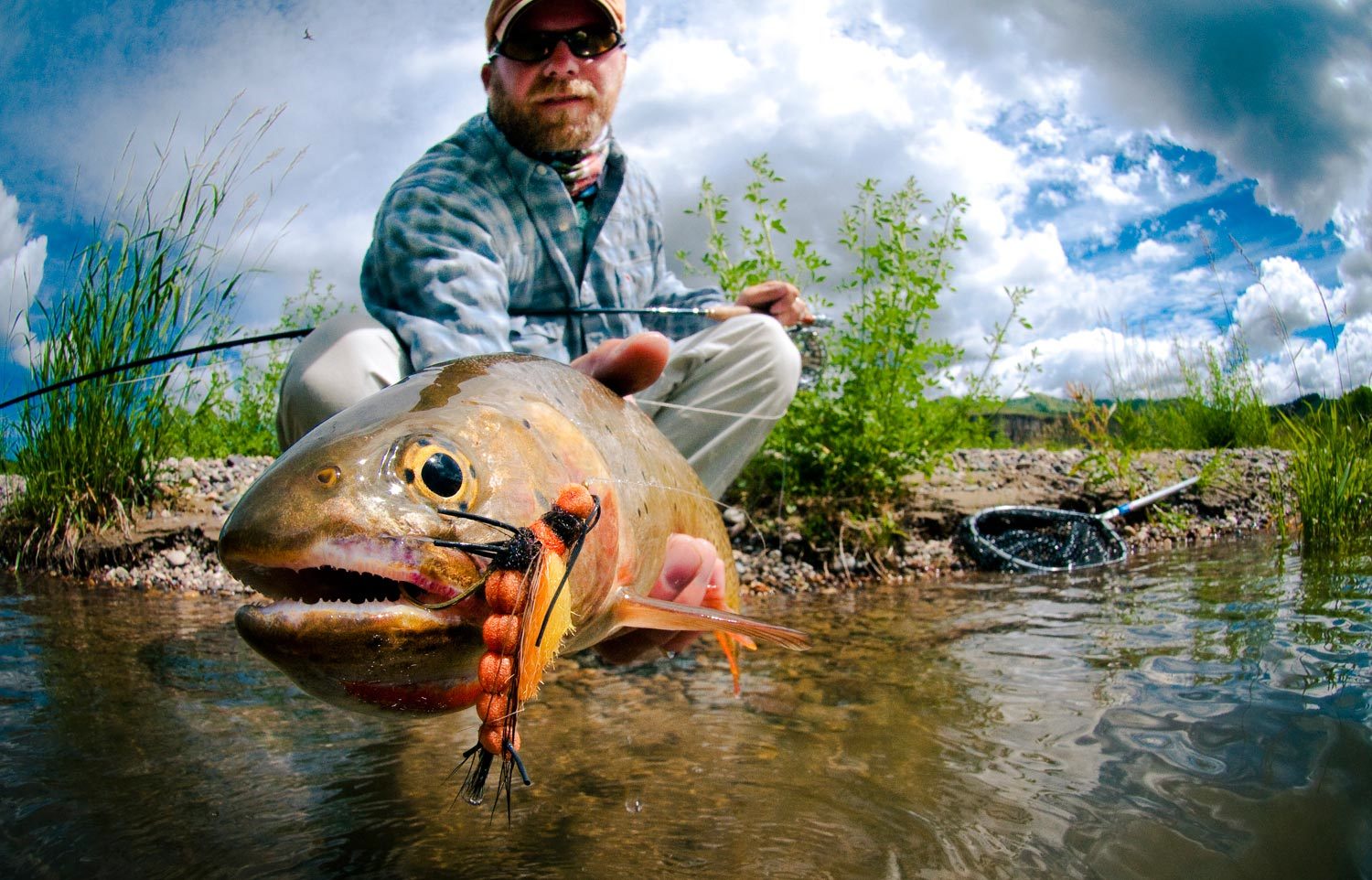
When the standard dead drift isn’t getting the job done, try subtle fly twitches. Photo Louis Cahill
Some days trout need more than just a well placed fly in their field of vision and a drag-free drift to persuade them to eat. When you’re working water that you’re certain holds trout, and a standard drag-free drift isn’t getting the job done, try imparting subtle movement on your fly/flies to trigger bites. The best way to execute this is by using well timed rod tip twitches, during the drift, when your fly is moving through high percentage trout holding water. Done properly, it will give your fly that extra “alive and life-like appeal” and that often will give trout the green light that your fly is a natural and not an impostor.
I had the honor of fly fishing with Rob Parkins (WY & ID veteran guide) and Zack Dalton (Farbank Sales Manager) on the South Fork of the Snake River during an epic salmonfly hatch. Both are exceptional fly anglers, and both demonstrated how effective strategic fly twitching can be for turning reluctant trout into eating trout. There were so many boats on the river and so many salmonfly imitations being flung at the banks, that the trout quickly became suspicious of motionless fly patterns drifting in the current. It didn’t matter how realistic the pattern was, if it wasn’t twitching and pulsing in the water as the trout moved in to investigate, most of the time they wouldn’t commit 100 percent. Rob and Zach both proved to be masters at twitching their salmonfly imitations precisely at the right time to persuade wily trophy trout to eat, right after those same trout had shunned ten to twenty other anglers imitations previously. Both concurred that the faster the water my fly was drifting in, the less frequent I needed to twitch my fly and the more precise I needed to be when I twitched it. Furthermore, they taught me that when my fly was drifting through slower moving or deeper water, that’s when I wanted to twitch my fly every couple of feet. They’re reasoning behind this, was turbulent water naturally gives your fly that life-like movement, where the slower water fails to do so.
Give this technique a try next time you’re trout fishing and the dead-drift isn’t putting fish on the board. The goal isn’t to splash, skate or pop your fly on the surface. All you’re wanting to do is move your fly just enough to twitch those rubberlegs and breath the material of the fly in the water. With some practice, you’ll get a good feel and touch on exactly how powerful or subtle the twitch needs to be according to the type of water your fishing, and the amount of slack that’s in your fly line. Lastly, this twitching technique works exceptionally well for fly patterns that imitate big food sources like the salmonfly and terrestrials (that often kick and flop on the surface), but it has also proven to be highly effective for smaller flies and subsurface patterns. I particularly like to occasionally twitch my flies when I’m nymphing frog water (deep or slow moving stretches of water). I’ve found that by doing so, it will call trout in from farther distances to investigate my flies.
Keep it Reel,
Kent Klewein Gink & Gasoline www.ginkandgasoline.com hookups@ginkandgasoline.com Sign Up For Our Weekly Newsletter!
This can be especially effective when if you are getting follows but no take. A little twitch can go a long way